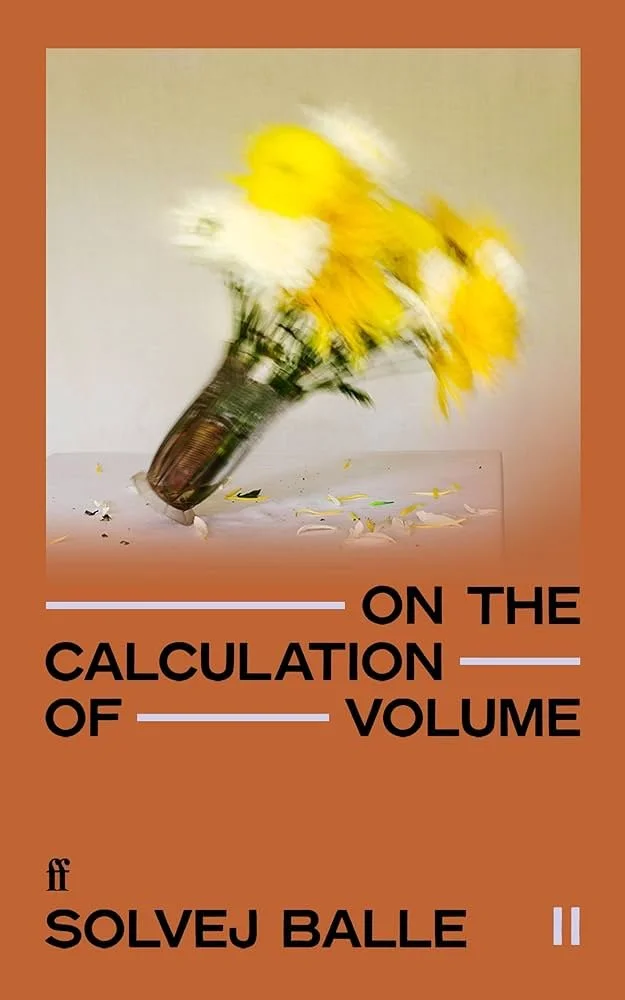I was a big fan of the first book in Balle's ambitious planned series of “On the Calculation of Volume”. I'm compelled by the immediacy of Tara's plight being caught in a time loop where November 18 repeats endlessly for her while she continues to age and the rest of the world wakes up experiencing this day for the first time. But, even more than the plot, I find it fascinating to consider the larger ideas and questions this story raises concerning human relationships, subjective experience and our temporal relationship to the material world. So it was exciting to read this second book which continues Tara's notes after a full year has passed living in November 18th.
Just to note, I think it would be quite disorientating entering into this second book without having read the first. It picks up where the previous book left off and only briefly explains the overall circumstances and nature of her predicament. Though Tara still hopes to find a way to escape her time loop there's a more resigned meditative tone in this continuation of her story. Since she's been denied the regular annual traditions of the year from holidays to changes in the seasons, Tara dedicates herself to recreating these events by visiting family (who a bit too conveniently believe that she is caught in a time loop) and travelling to parts of Europe where the climates more closely replicate the season she feels she ought to be experiencing. Thus she gains a wider view of what the world experiences on November 18th from late-year lambing to football matches.
I enjoyed how this made me think more about how reliant we become on cycles of the year and changes in life. Without the holiday festivities Tara has come to expect there's a marked absence in her life: “traditions don't need to harmonise, they simply have to be there. They have to be there as a sort of safety net, to give one something to land on. When the world falls apart. When time fractures.” Far from going through the motions, the traditions which are part of family and community life form a touchstone. It's moving how Tara fastidiously goes about recreating Christmas with her family and then immersing herself in a Northern European snowy landscape to simulate the experience and sensibility which comes with winter.
A fascinating distinction is drawn between the weather and the seasons. A woman Tara meets in a hospital after she's injured herself remarks that “Temperature and precipitation were meteorological phenomena, she said. Cold and heat, cloudbursts and drought. But seasons? She saw them more as psychological phenomena.” I've noticed how something that often unites people (especially the British) is discussing the weather. It most often comes up when the weather that we're experiencing doesn't conform to what we expect the weather to be within the season we're currently inhabiting. This reminds me of Ali Smith's Seasonal Quartet (“Autumn”, “Winter”, “Spring” and “Summer”) and how many of the characters discuss or long for future seasons – as if the anticipation of the season to come is more enticing than appreciating the season one is inhabiting. Tara's plan to follow and record the seasons becomes like performance art where she immerses herself in the stereotypical sensations of a season to satisfy her psychological needs. Of course, this isn't always satisfying because there are indications which remind her it's not actually that season.
Being on the move also means that Tara doesn't use up all the resources of her local area. Any food she consumes doesn't appear again the next day so over time she drains the resources of local food outlets or restaurants. Consequently, she has the recurring feeling that she's a kind of monster: “I am devouring my world. That I have to move on, to avoid eating up my world. That I am a monster on the move, a winter monster.” Her condition creates a hyper-awareness of the environmental impact of her presence in a way we don't often think about in our normal lives because usually any resources we use can be easily replaced. I like how this factor creates an added layer of considering existence when thrown outside of the normal flow of time.
Our lives are so often consumed with the daily obligations of work and leisure time spent with partners, family and friends. I read this novel while suffering from a cold so I was less active than usual and absented myself from ordinary daily activities. So I enjoy how Tara's peculiar predicament simulates that experience of being thrown out of the normal flow of life. As I said with the first book, I don't think the how and why of this occurrence is as interesting as the larger questions her condition raises about existence. She's driven into a much more interior and ruminative space – eventually going on a tangent researching Roman civilization inspired by the sestertius she continues to carry with her. I enjoyed how this mimics the sense of becoming obsessed with a certain subject or book where time seems to disappear.
Tara also seems to come to a place where she can partly accept her fate and live in this eternal present: “my time is not a circle and it is not a line, it is not a wheel and it is not a river. It is a space, a room, a pool, a vessel, a container. It is a backyard with a medlar tree and autumn sunshine.” Since we're so accustomed to thinking about our personal and collective histories on timelines I like that her unique sense of existence forces me to consider another way of conceptualising a relationship to time. I'm very curious about where the series will go next (especially as this book ends with quite a cliffhanger.) I do worry that the author feels the need to work in twists which will keep the reader compelled to pick up the next book but, for the moment at least, I'm still hooked.








